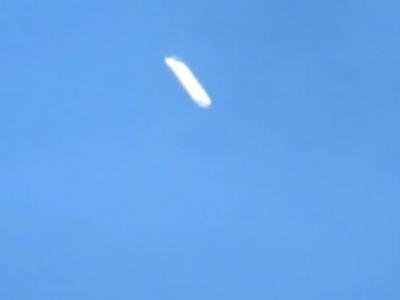Oldest Rock Speck Zeros In On Earth's Cooling Date
The researchers used a new technique to count individual atoms in the grain of rock.
The oldest remaining grain of early Earth's original solid rock crust has now been confirmed to be a 4.374-billion-year-old old zircon crystal from Jack Hills, Australia.
That age should settle a scientific debate over the accuracy of that mineral's internal clock, and cuts the time from when Earth was hit by a Mars-sized body (which led to the formation of the Moon) and the cooling and creation of Earth's first solid crust from 600 million years to 100 million years.
“This, I believe, is the oldest zircon that's ever been dated on Earth,” said John Valley, of the University of Wisconsin in Madison. He and his colleagues have published their findings in the Feb. 23 issue of the journal Nature Geoscience.
Previous dating of the ancient Jack Hills zircons about ten years ago had arrived at ages of about 4.4 billion years, Valley explained. But there were doubts about whether some of the atomic elements used for the dating had moved about in the crystals and thrown off the age by a few hundred million years.
“Whether a grain is 4.3 or 4.4 billion years old, and whether this reflects a primary age, is not a trivial matter,” explained Sam Bowring of the Massachusetts Institute of Technology.
“In the context of the 4.4- to 4.5-billion-year age of the Earth, a difference in age of 0.1 or 0.2 billion years (100 or 200 million years) is enormous in terms of modeling the geochemical evolution of Earth and the formation and recycling of the first continental crust.”
The element in question is an isotope of lead, which is created by the radioactive decay of uranium in zircons.
The age of a grain is figured by measuring the amounts of the parent uranium isotopes compared to the daughter lead isotopes. This is only accurate if no uranium or lead gets into or escapes the zircon.
Researchers were concerned that the very process of uranium decaying -- which fires out a high-speed alpha particle -- might have kicked around lead atoms in the zircons and messed things up.
“If the lead leaves, it can be concentrated somewhere else,” said Valley. “The apparent age where it goes will appear older and where it has left will appear younger. What we've done is solve the lead mobility problem.”
They did it by laboriously counting and mapping clusters of lead atoms in the zircon using what's called atom-probe tomography.
“It's astonishing to be able to do this,” said Valley, “literally counting atoms with an atomic probe.”
Valley and his colleagues found that the lead was indeed getting kicked around, but it wasn't going far enough to throw off the age of the zircon.
“I think it settles it, as far as it's possible,” said Valley.
It also points the way for techniques that can be used to better study zircons from beyond Earth, said Valley. There are, for instance, zircons from meteorites that are older than the Earth -- up to perhaps 4.6 billion years old.
And Moon rocks have zircons that are dated to 4.44 billion years old (this fits with the idea that the Moon solidified more quickly because it is smaller than Earth).
In fact the Valley's research is funded, in part, by NASA's Astrobiology program in anticipation of the day when a sample-return mission to Mars brings back aspirin-sized rock samples for analysis.
“We're now establishing the tools for examining those samples,” Valley said.(Feb 23, 2014 01:00 PM ET // by Larry O'Hanlon)












